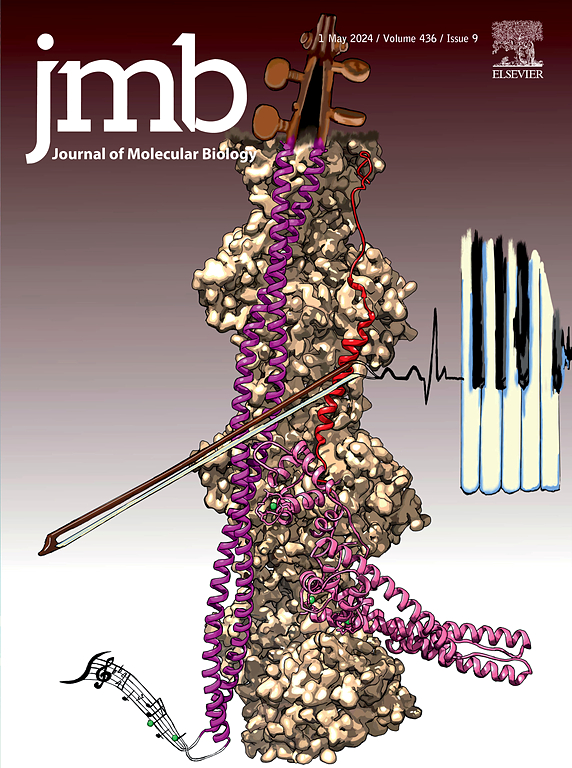Optimized Preparation of Segmentally Labeled RNAs for NMR Structure Determination
IF 4.7
2区 生物学
Q1 BIOCHEMISTRY & MOLECULAR BIOLOGY
引用次数: 0
Abstract
RNA structures are significantly underrepresented in public repositories (∼ 100-fold compared to proteins) despite their importance for mechanistic understanding and for development of structure prediction/validation tools. A substantial portion of deposited RNA structures have been determined by NMR (∼30%), but most comprise fewer than 60 nucleotides due to complications associated with NMR signal overlap. A promising approach for applying NMR to larger RNAs involves use of a mutated DNA polymerase (TGK) that can extend “primer” RNA strands generated independently by synthetic or enzymatic methods [Haslecker et al., Nature Commun. 2023]. In attempts to employ this technology, we uncovered sequence- and enzyme-dependent complications for most constructs examined that prohibited preparation of homogeneous samples. By using TGK extension efficiency and NMR as guides, we identified non-templated run-on by wild-type T7-RNA polymerase (RNAPWT) as the primary source of product heterogeneity. Use of 2′-O-methylated DNA templates did not prevent RNAPWT run-on for most constructs examined. However, primer RNAs with appropriate 3′ end homogeneity were obtained in high yield using a recently described T7 RNAP mutant designed for improved immunogenic behavior. Minor spectral heterogeneity sometimes observed for 3′ residues, caused by partial premature TGK termination, could be moved to sites downstream of the RNA region of interest by employing extended template DNAs that encode additional non-interacting 3′ nucleotides. We additionally present an approach for large-scale synthesis of homogeneous template DNA required for TGK extension. With these modifications, segmentally labeled RNAs appropriate for high resolution structural studies are now routinely obtainable.

求助全文
约1分钟内获得全文
求助全文
来源期刊

Journal of Molecular Biology
生物-生化与分子生物学
CiteScore
11.30
自引率
1.80%
发文量
412
审稿时长
28 days
期刊介绍:
Journal of Molecular Biology (JMB) provides high quality, comprehensive and broad coverage in all areas of molecular biology. The journal publishes original scientific research papers that provide mechanistic and functional insights and report a significant advance to the field. The journal encourages the submission of multidisciplinary studies that use complementary experimental and computational approaches to address challenging biological questions.
Research areas include but are not limited to: Biomolecular interactions, signaling networks, systems biology; Cell cycle, cell growth, cell differentiation; Cell death, autophagy; Cell signaling and regulation; Chemical biology; Computational biology, in combination with experimental studies; DNA replication, repair, and recombination; Development, regenerative biology, mechanistic and functional studies of stem cells; Epigenetics, chromatin structure and function; Gene expression; Membrane processes, cell surface proteins and cell-cell interactions; Methodological advances, both experimental and theoretical, including databases; Microbiology, virology, and interactions with the host or environment; Microbiota mechanistic and functional studies; Nuclear organization; Post-translational modifications, proteomics; Processing and function of biologically important macromolecules and complexes; Molecular basis of disease; RNA processing, structure and functions of non-coding RNAs, transcription; Sorting, spatiotemporal organization, trafficking; Structural biology; Synthetic biology; Translation, protein folding, chaperones, protein degradation and quality control.
 求助内容:
求助内容: 应助结果提醒方式:
应助结果提醒方式:


